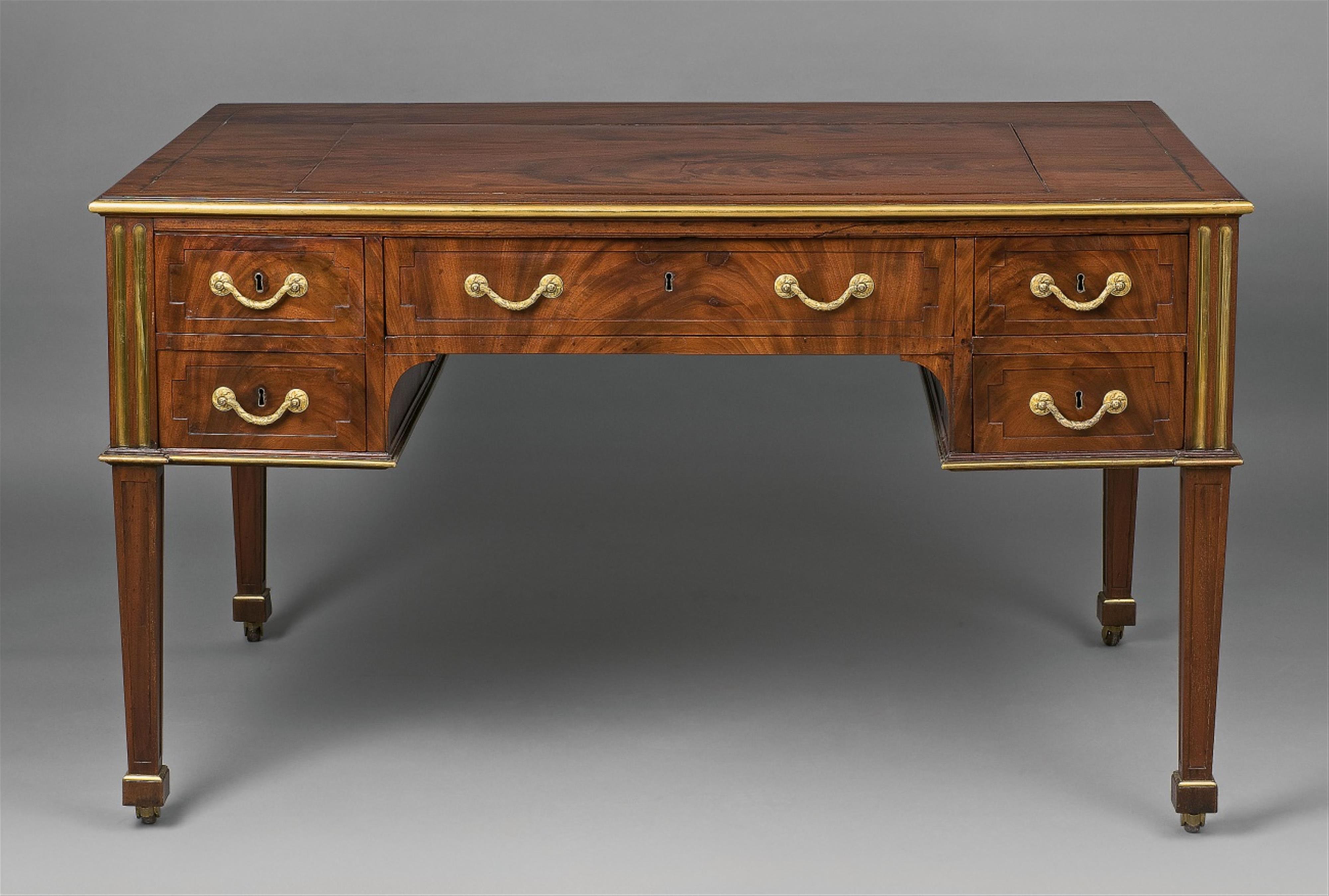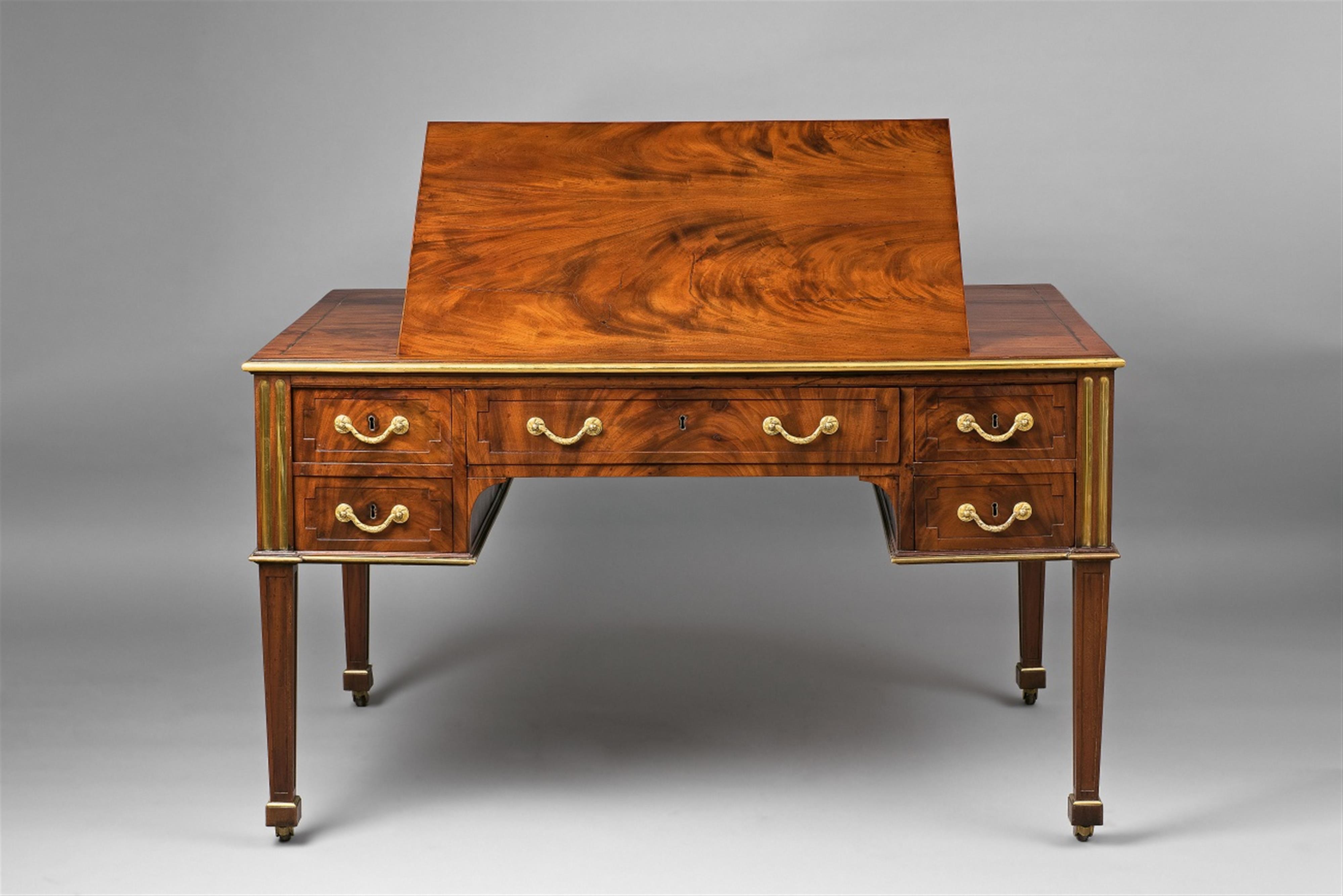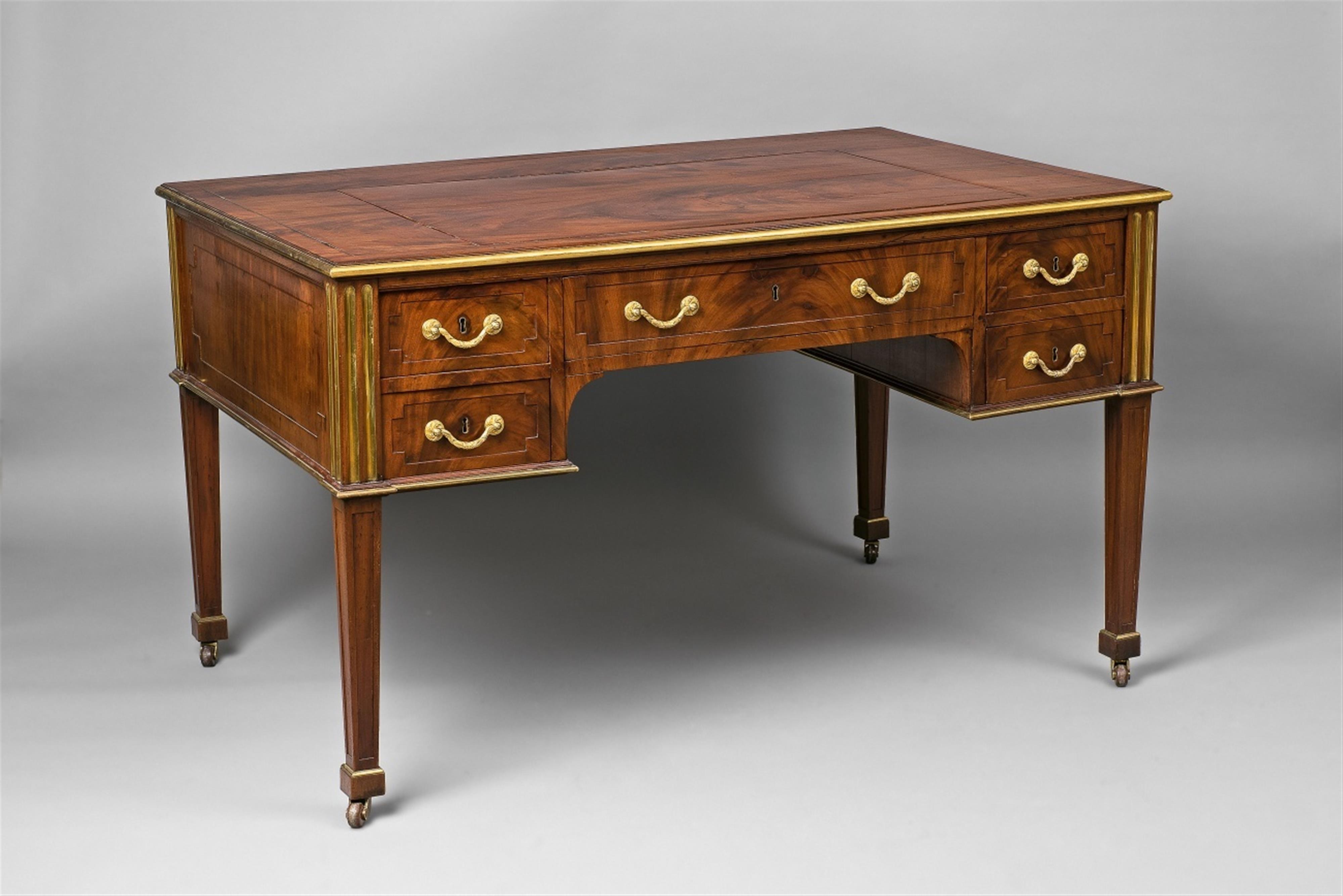An important David Roentgen bureau plat
Mahogany on oak, ormolu and brass mountings, iron locks. Writing table with three drawers in two rows on tapering angular supports on casters. A spring mechanism reveals a central tilted writing surface. Brass mountings to the angles. The writing surface with brass wire inlays and a further tilted writing surface. The legs removable. The reverse with simpler veneer, possibly to be placed against a wall. Professionally restored. H 81.5, W 138, D 88 cm.
Neuwied, David Roentgen workshop, circa 1780.
David Roentgen was born in Herrnhaag on 11th August 1743. He died in on 12th February 1807 in Wiesbaden. Roentgen was one of the most successful and innovative cabinetmakers of the late 18th century. As part of the Herrnhut fraternity, which provided the Roentgen firm with financial security, Abraham Roentgen and his son David were able to work more freely than other cabinetmakers. They were one of the first furniture workshops in Germany founded independently of any aristocratic court. The firm was also free from the constraints associated with guild membership and they were able to hire specialists for various tasks, allowing them to create furniture of the highest possible quality.
This desk was made in the later, mature phase of the workshop. Neoclassical forms have entirely obscured those of the late Rococo. Roentgen made the transition to the “new style” very early on. Lines became straighter and the works no longer make use of opulent marquetry, so-called “peinture de bois“. Instead the designs focus on the pattern of the veneer and the harmonic arrangement of the horizontal and vertical compartments.
Greber mentions that only very few flat top writing tables were made in Roentgen's workshop at this time. All known examples display the same proportions as the present work and display a harmonious ratio of wood veneer to gilt metal mountings. The proportions of the central drawer in comparison to the side drawers are the same in all of Roentgen's desk designs, regardless of flat topped, fall front, or cylinder.
Provenance
According to a statement by the owner prior to the previous owner, the piece once beloned to the Counts of Solms Assenheim and was acquired from them in 1958 by Erich Bienert in Frankfurt.
Otto von Mitzlaff art dealers, Wächtersbach.
German private collection.
Literature
Cf. Greber, Abraham und David Roentgen, Starnberg 1980, vol. 1, p. 245 and vol. 2, illus. 687 ff.






